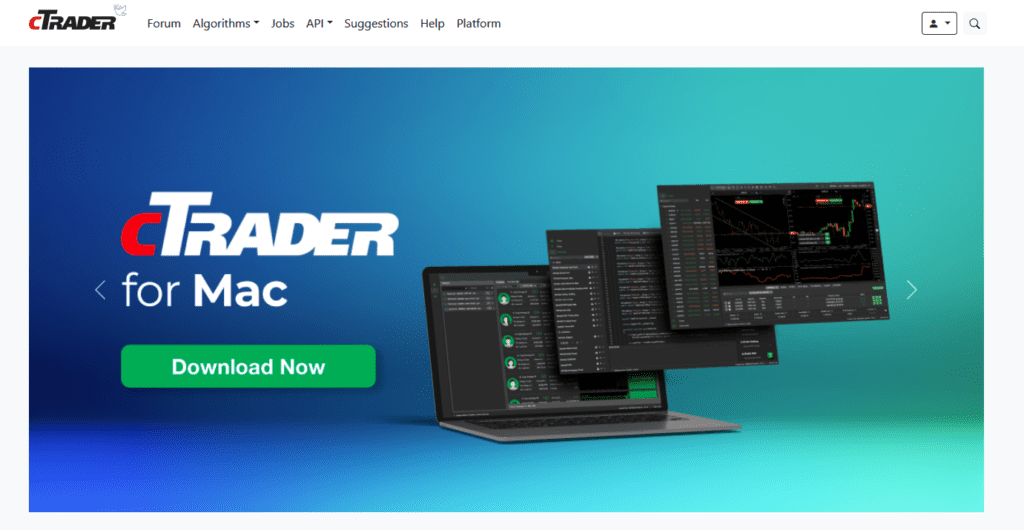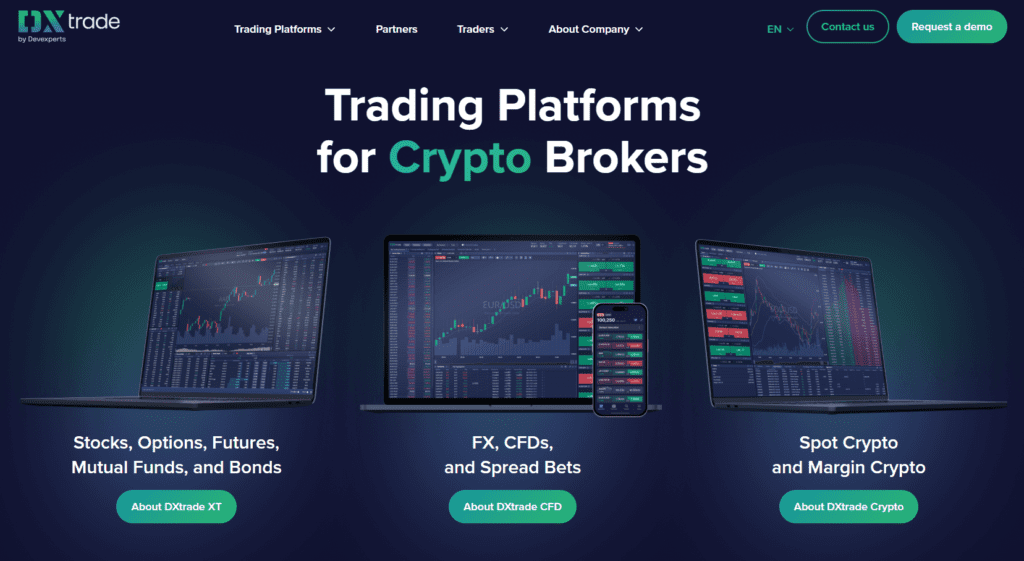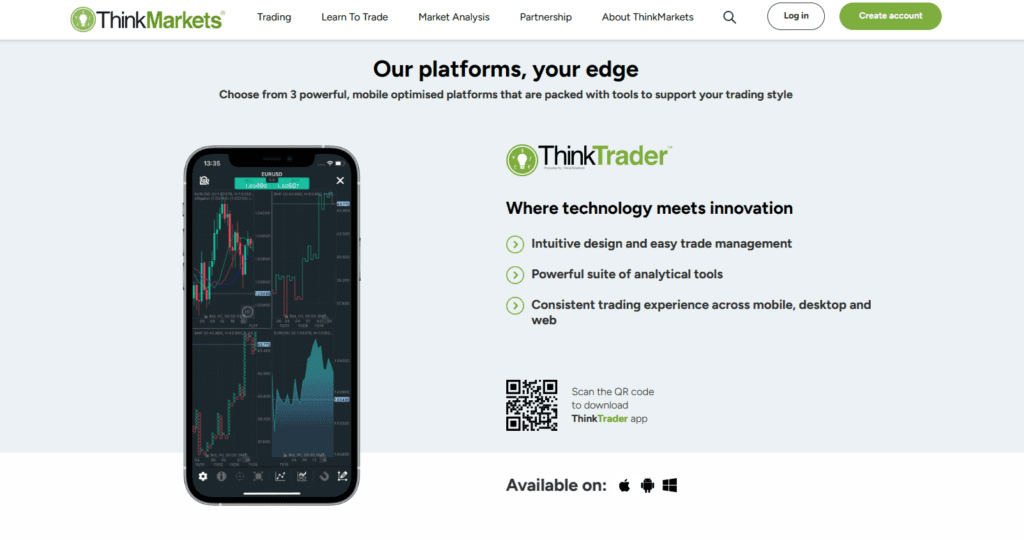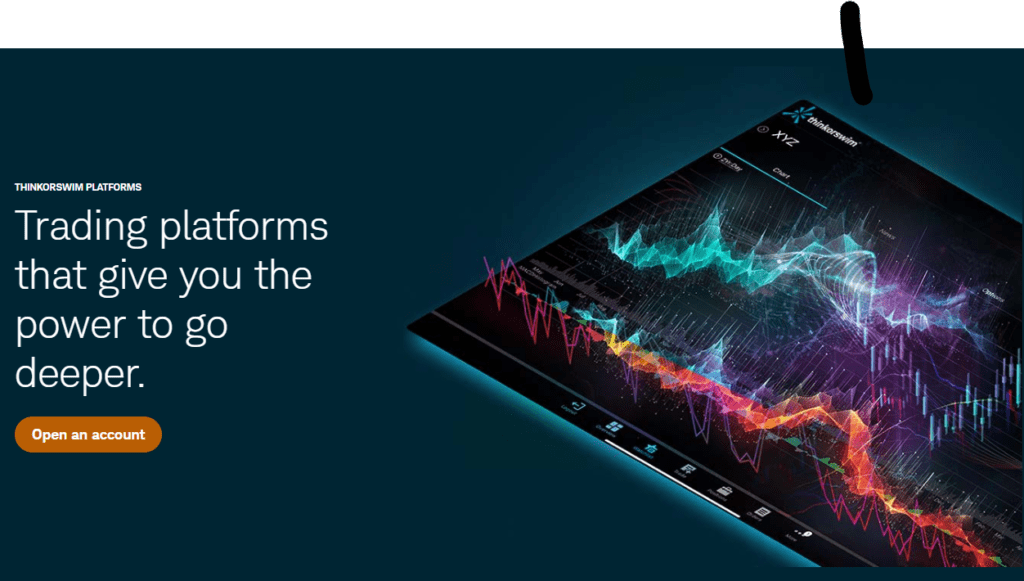Introduction to Trading Platform Changes
The trading world is facing a significant shift as MetaTrader, a long-standing favorite among traders, has announced the revocation of licenses for its popular platforms, MT4 and MT5. This decision creates a pressing need for traders to seek other reliable platforms that can offer robust features and stable performance.
In response to this change, several MetaTrader alternatives have gained attention, promising to fill the gap left by MetaTrader. This article will explore some of the noteworthy platforms that have emerged as viable options. These include cTrader, known for its advanced trading capabilities; TradeLocker, a newcomer with innovative tools; MatchTrader, focused on forex and CFD brokers; DxTrade, which offers customization options; ThinkTrader, recognized for its intuitive user interface; NinjaTrader, favored by active traders for its advanced charting; and Thinkorswim, a veteran platform with powerful analytical tools. Each of these platforms brings unique strengths to the table, catering to different aspects of trading needs. Let’s delve into what each platform offers and how they compare to the now less accessible MetaTrader platforms.
cTrader: Advanced Trading and Algorithmic Capabilities

cTrader is a preferred alternative to MetaTrader for traders seeking advanced functionalities and comprehensive algorithmic options. This platform is particularly valued for its ability to cater to both casual traders and professionals who require direct market access and sophisticated tools to execute their trades effectively. At FundYourFX, we use cTrader because it aligns with our commitment to providing state-of-the-art technology and superior trading conditions. cTrader offers enhanced charting capabilities, a user-friendly interface, and robust security features, which make it an ideal choice for our traders aiming for precision and efficiency in their trading activities. For those interested in exploring top-rated cTrader prop firms, check out our carefully curated list of The 6 Best cTrader Prop Firms in 2024
Features and Functionality
cTrader supports extensive algorithmic trading capabilities through cAlgo, a feature that allows users to develop and implement custom algorithmic strategies using C#. This integration not only enhances automated trading but also provides traders with the ability to conduct technical analysis and manage trading operations with high precision. The platform offers direct market access, enabling traders to place orders directly into the exchange without any dealer intervention, which can improve execution speeds and reduce slippage.
The technical analysis tools available on cTrader are among the most advanced in the market, featuring a wide array of charting options and technical indicators that are customizable to suit the unique needs of its users.
Pros and Cons
Pros:
- Extensive Customization: Users can tailor the trading environment to their specific needs, which is ideal for advanced traders who require specific functionalities.
- Advanced Charting Tools: cTrader provides a variety of charting tools that allow for detailed market analysis and effective decision-making.
- Algorithmic Trading: The integration of cAlgo using C# enables traders to write and implement complex algorithms, automating their trading strategies to a high degree.
Cons:
- Complexity for Beginners: The range of features and the level of detail in customization can be overwhelming for new traders.
TradeLocker: Community-Driven Platform for Beginners

TradeLocker is emerging as a standout trading platform, particularly for newcomers to the trading world. It distinguishes itself by heavily incorporating community feedback and interaction into its development and functionality.
Community Engagement and Development
One of TradeLocker’s defining features is its community-driven approach. The platform actively incorporates suggestions and feedback from users, particularly through its dedicated Discord channel. This channel allows traders to communicate directly with the development team and with each other, fostering a collaborative environment where users can share strategies, tips, and get real-time support. This strong community engagement not only enhances user experience but also ensures the platform evolves in ways that directly benefit its user base.
Pros and Cons
Pros:
- Highly Intuitive Interface: TradeLocker is designed with beginners in mind, featuring an interface that is easy to navigate, which helps new traders learn the ropes without feeling overwhelmed.
- Strong Community Support: The active Discord community provides a robust support network for users, which is invaluable for newcomers to trading.
- Integration with TradingView: TradeLocker integrates seamlessly with TradingView, offering comprehensive charting tools that enhance trading decisions with detailed analytics and visual data.
Cons:
- Still in Development for Algo Trading: While the platform excels in many areas, its algorithmic trading capabilities are still under development, which might limit advanced traders looking for extensive automated trading options.
- Limited Broker Integration: Currently, TradeLocker has limited integration with major brokers, which could restrict users in terms of executing trades through their preferred financial institutions.
MatchTrader: Broker-Centric Trading Solution

MatchTrader has carved out a niche in the trading platform market by focusing specifically on brokers, offering them highly customizable solutions that can be tailored to meet their unique needs.
Broker Integration and Customization
MatchTrader is primarily designed to benefit brokers, providing them with a platform that can be deeply integrated into their existing systems. This integration capability allows for seamless operations, helping brokers manage client accounts efficiently and effectively. The platform’s customization options are extensive, enabling brokers to adjust features, add-ons, and interfaces to align with their specific operational needs and client servicing strategies.
Pros and Cons
Pros:
- High Level of Broker Integration: MatchTrader excels in how well it can be incorporated into a broker’s business model, enhancing the overall functionality and efficiency of trading operations.
- Customizable Platform Features: The ability to customize the platform allows brokers to create a user experience that can differentiate them from competitors and better cater to their clients’ needs.
Cons:
- May Be Less Known to Individual Traders: As MatchTrader is heavily geared towards brokers, it may not be as well-known or as accessible to individual traders who are looking for platforms they can use independently.
- Focused More on Broker Needs Than Individual Preferences: The platform’s features and developments are primarily designed to meet the needs of brokers, which may not always align with what individual traders are looking for in a trading platform.
DxTrade: Flexible and Adaptable Trading Environment

DxTrade is gaining attention in the trading platform arena due to its exceptional flexibility and adaptability, catering to both brokers and individual traders with customizable solutions.
Customizability and Adaptability
DxTrade stands out for its adaptability, providing a platform that can be tailored to fit the specific needs of both brokers and traders. This flexibility is a key feature, allowing for a personalized trading experience that can adjust to various trading styles and requirements. Whether it’s modifying the interface, adding specific analytical tools, or integrating different types of assets, DxTrade offers a versatile environment that responds well to user input and changing market conditions.
Pros and Cons
Pros:
- Strong Customization Options: The platform’s ability to adapt and be customized is one of its strongest features, enabling users to create a trading environment that truly suits their strategies and preferences.
- Supports Multiple Asset Types: DxTrade supports a variety of asset classes, including stocks, forex, commodities, and cryptocurrencies, making it a versatile choice for traders interested in diversifying their portfolios.
Cons:
- Less Visibility: Despite its strengths, DxTrade has less visibility compared to more established platforms, which can be a hurdle in attracting users who tend to gravitate towards platforms with higher name recognition.
- Lower Adoption Rate: The platform’s lower adoption rate might limit the availability of community-driven support and resources that can benefit users, especially beginners seeking guidance and learning materials.
ThinkTrader: Comprehensive Tools for In-Depth Analysis

ThinkTrader is recognized for its powerful suite of tools that cater to traders seeking deep analysis and detailed research capabilities. This platform combines user-friendly design with advanced functionalities to support thorough market evaluations.
Research and Analysis Capabilities
ThinkTrader is equipped with a range of robust research tools and comprehensive trading analytics designed to provide traders with the insights needed to make informed decisions. These tools include advanced charting capabilities, a variety of technical indicators, and options for extensive back-testing, which allows traders to test their strategies against historical data before applying them in real markets. The platform’s focus on detailed analytics helps users identify market trends, evaluate trading opportunities, and refine their trading tactics with precision.
Pros and Cons
Pros:
- Advanced Analytical Tools: ThinkTrader offers a suite of sophisticated tools that enable detailed analysis and informed decision-making.
- User-Friendly Interface: Despite its advanced capabilities, the platform remains accessible and easy to navigate, making it suitable for both novice and experienced traders.
- Supports Extensive Back-Testing: The ability to perform comprehensive back-testing is a significant advantage, as it helps traders validate and refine their strategies based on historical performance.
Cons:
- Learning Curve: While the interface is user-friendly, the depth and breadth of tools available can require some time to master fully. New users might find the array of options daunting at first.
- Higher Data Usage: The advanced functionalities and the continuous updating of live market data can lead to higher data usage, which might be a concern for users with limited bandwidth or those trading on mobile devices.
NinjaTrader: Specialized for Futures and Forex Markets

NinjaTrader is a robust platform that is especially popular among traders who focus on the futures and forex markets. It stands out for its advanced automation tools and deep customization options, catering primarily to seasoned traders who require detailed analytics and the ability to automate their trading strategies.
Algorithmic Trading and Customization
NinjaTrader’s strength lies in its powerful algorithmic trading capabilities, which allow traders to automate their trading strategies with precision and efficiency. The platform uses NinjaScript, a proprietary scripting language that enables deep customization of trading strategies, trading indicators, and automated systems. This flexibility allows traders to tailor the software to their specific trading needs and preferences, enhancing their ability to respond to dynamic market conditions.
Additionally, NinjaTrader provides powerful back-testing and simulation features. These tools enable traders to test their trading strategies against historical data before applying them in real-time markets, significantly reducing risk and improving strategy reliability.
Pros and Cons
Pros:
- Deep Customization with NinjaScript: Offers extensive customization options that allow traders to tailor almost every aspect of their trading experience.
- Powerful Back-Testing and Simulation Features: These tools are invaluable for developing and refining trading strategies, providing traders with confidence in their methods before live implementation.
Cons:
- Primarily for Advanced Traders: The complexity of the features and the depth of options available can be overwhelming for beginners or less experienced traders.
- Requires Purchase for Full Features: To access the full range of tools and capabilities, traders need to purchase the software, which can be a barrier for those not ready to commit financially.
- Mainly Desktop-Oriented: NinjaTrader is primarily designed for desktop use, which may limit accessibility for traders who prefer trading on mobile devices or need more flexibility in how they access their trading platforms.
Thinkorswim: A Robust Platform for Diverse Trading Needs

Thinkorswim by TD Ameritrade is renowned for its comprehensive suite of trading tools, making it an ideal platform for trading stocks, options, and futures. Known for its robust functionality, the platform caters to traders of all levels but is particularly valuable for those who engage in multifaceted trading strategies.
Sophisticated Trading Tools
Thinkorswim offers an extensive array of trading tools that are well-suited for comprehensive research and complex trading strategies. The platform provides advanced charting capabilities, technical analysis tools, and real-time data—all of which are essential for trading in fast-paced markets like stocks, options, and futures. Additionally, Thinkorswim supports simulated trading, which allows traders to practice their strategies in a risk-free environment using real market data before committing real capital.
Pros and Cons
Pros:
- Extensive Research and Analysis Tools: The platform is equipped with a variety of tools that enable deep market analysis and detailed research, aiding in well-informed trading decisions.
- No Minimum Balance Required: Thinkorswim does not require a minimum account balance, making it accessible for traders who may not want to commit a large amount of capital initially.
- Wide Range of Tradable Securities: It supports a vast array of securities, including stocks, options, ETFs, futures, and forex, offering versatility to traders interested in diversifying their portfolios.
Cons:
- Complexity Can Overwhelm Beginners: The wealth of features and the depth of options available can be daunting for new traders, making it challenging to navigate the platform without prior trading experience.
- Some Features Require Advanced Trading Knowledge: While Thinkorswim is rich in features, fully leveraging its capabilities often requires a solid understanding of advanced trading concepts and strategies.
Comparison of Platforms
To better understand the strengths and limitations of each trading platform discussed, a comparative chart can provide a clear visual representation. This chart would include key aspects such as user interface, technical capabilities, algorithmic support, and market access. Such a comparison can help traders evaluate which platform might best suit their needs. 
Choosing the Right Platform
When selecting a trading platform, it’s crucial to consider several factors tailored to your specific needs:
- Trading Style and Experience Level: Are you a beginner, an intermediate trader, or an expert? Platforms like TradeLocker and ThinkTrader are more suited for beginners and intermediate users due to their user-friendly interfaces. In contrast, NinjaTrader and Thinkorswim offer complex tools that fit more experienced traders.
- Market Focus: What markets are you interested in trading? If you’re focused on futures and forex, NinjaTrader might be the best choice. If you need access to a variety of markets, Thinkorswim and DxTrade offer a wide range of tradable securities.
- Technical Requirements: Do you need advanced charting and analysis tools? Thinkorswim and ThinkTrader provide extensive analytical tools. If algorithmic trading is a priority, cTrader and NinjaTrader provide robust support for automated trading strategies.
- Adaptability and Customization: If customization is key, platforms like DxTrade and MatchTrader offer significant flexibility to tailor the trading environment to your needs.
By carefully evaluating each platform’s strengths and aligning them with your personal trading goals and style, you can choose a platform that not only meets your immediate needs but also supports your long-term trading success.
Transitioning from MetaTrader: Tips and Considerations
Moving from a familiar trading environment like MetaTrader to a new platform can be challenging. However, with the right approach and resources, the transition can be smooth and even rewarding. Here are some practical tips and considerations for adapting to new trading platforms effectively.
Adapting to New Platforms
- Use Demo Accounts: Most trading platforms offer demo or simulation accounts. These are invaluable for getting accustomed to a new interface without risking real money. Spend time exploring all the features available in the demo mode, from executing trades to using custom indicators. This practice will help you understand the nuances of the platform and identify any differences in functionality compared to what you were used to with MetaTrader.
- Start Small: When you decide to go live, start with smaller trades. This approach allows you to experience the live environment with minimal risk. Monitor how the platform handles your transactions, including execution speed and any slippages, to better understand its performance under real market conditions.
- Customize Your Workspace: Take advantage of customization options to tailor the trading environment to your needs. This might include setting up trading alerts, choosing preferred chart types, or organizing how information is displayed. A familiar setup can make the transition less daunting.
Educational Resources
- Platform-Specific Tutorials: Many platforms provide their own tutorials and guides, which can be extremely helpful. These resources are designed to give you a comprehensive overview of the platform’s capabilities and how to utilize them effectively.
- Community Forums and Support: Join platform-specific forums, webinars, and discussion groups. Engaging with the community not only helps you learn from experienced users but also provides insights into common issues and how to solve them. Community support can be a great comfort and resource, especially when you are just starting out with a new platform.
- Continuous Learning: Trading platforms frequently update and add new features. Stay updated with any changes by subscribing to newsletters or following the platform’s official blog. This will help you leverage new tools and features as soon as they are available, keeping you at the forefront of trading technology.
Transitioning to a new platform is a significant change, especially if you have been using MetaTrader for a long time. However, with the right preparation and use of available resources, you can make this change a step forward in your trading journey.
Embracing Change in Trading Technology
Transitioning away from a familiar tool like MetaTrader can feel daunting, but it also opens up a world of new possibilities. The trading platforms we’ve discussed not only serve as MetaTrader alternatives but also provide unique opportunities to enhance and refine your trading strategies with fresh tools and perspectives.
Encouragement
It’s natural to feel a bit hesitant about adopting a new platform, but embracing these changes can significantly benefit your trading approach. Each of the platforms mentioned offers something unique—from cTrader’s algorithmic precision to Thinkorswim’s depth of market analysis. Exploring these options allows you to discover tools and features that might better suit your trading style or offer new avenues for profit. Remember, the goal of every trader is to stay adaptable and informed, qualities that will serve you well in any trading environment.
Future Outlook
The landscape of trading technology is continuously evolving. As digital technologies advance, trading platforms are becoming more sophisticated, offering greater efficiency, deeper analytical insights, and more user-centric experiences. This evolution suggests that the future of trading will increasingly leverage technological innovations, making it crucial for traders to stay ahead of the curve by familiarizing themselves with the latest tools and platforms.
The platforms discussed could very well lead the next wave of market trends, providing traders with cutting-edge capabilities that redefine how we understand and interact with financial markets. By staying open to these changes and continuously learning, traders can position themselves to take full advantage of the evolving trading landscape, potentially leading to improved outcomes and greater market success.
In summary, while the withdrawal of MetaTrader’s licenses might seem like an end, it should be viewed as a beginning—a push towards newer, potentially more rewarding trading experiences. Let this be a moment of transition that invites growth and new possibilities in your trading career.







